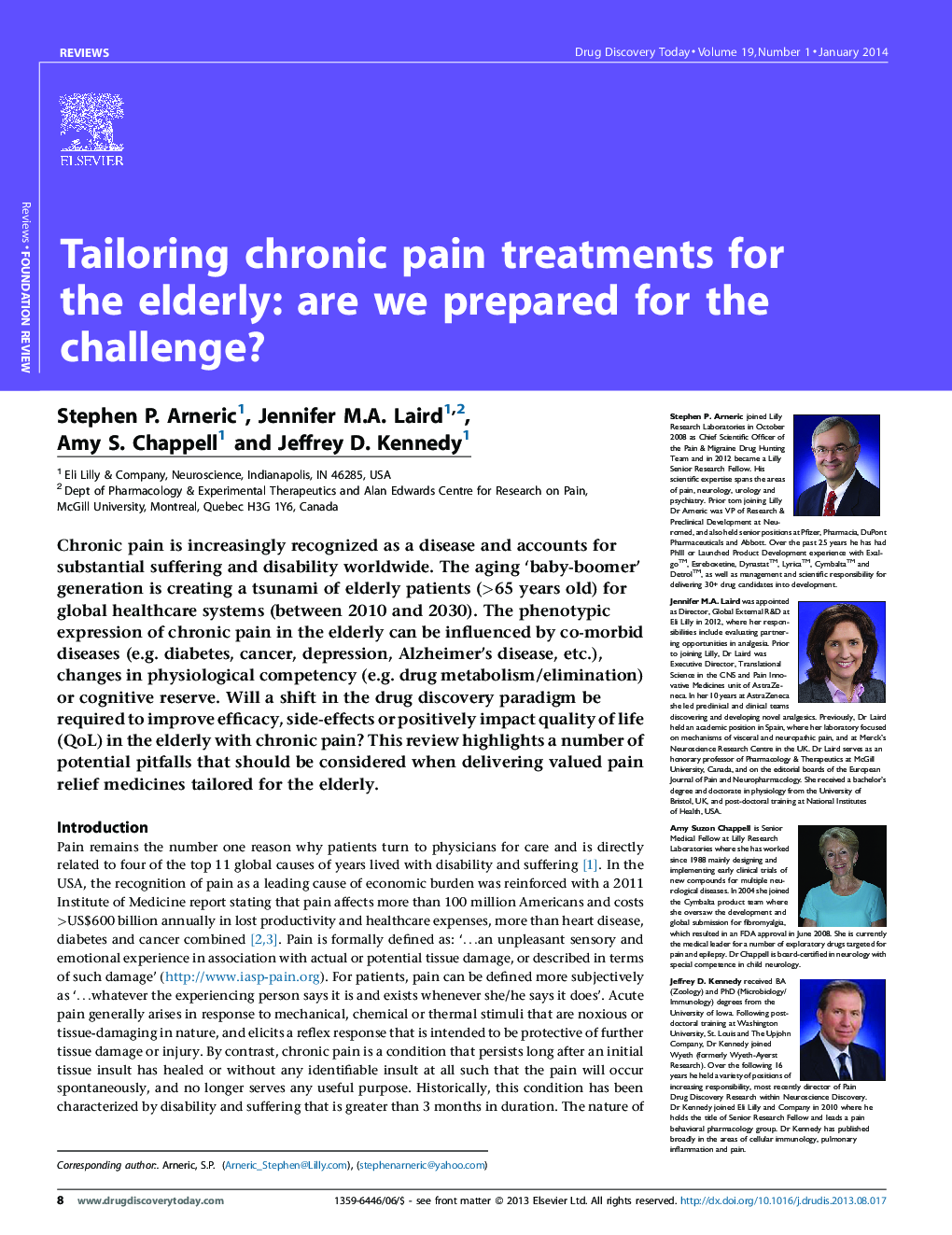| کد مقاله | کد نشریه | سال انتشار | مقاله انگلیسی | نسخه تمام متن |
|---|---|---|---|---|
| 2080057 | 1079930 | 2014 | 10 صفحه PDF | دانلود رایگان |
• The ‘baby-boomer’ generation will double the elderly population in the USA by 2030.
• Aging impacts nociceptive processing in humans and animals models.
• Pain management approaches in elderly patients are limited by frailty and quality of life challenges.
• Challenges must be met to deliver valued analgesics for the ‘tsunami of elderly’.
Chronic pain is increasingly recognized as a disease and accounts for substantial suffering and disability worldwide. The aging ‘baby-boomer’ generation is creating a tsunami of elderly patients (>65 years old) for global healthcare systems (between 2010 and 2030). The phenotypic expression of chronic pain in the elderly can be influenced by co-morbid diseases (e.g. diabetes, cancer, depression, Alzheimer's disease, etc.), changes in physiological competency (e.g. drug metabolism/elimination) or cognitive reserve. Will a shift in the drug discovery paradigm be required to improve efficacy, side-effects or positively impact quality of life (QoL) in the elderly with chronic pain? This review highlights a number of potential pitfalls that should be considered when delivering valued pain relief medicines tailored for the elderly.
Journal: Drug Discovery Today - Volume 19, Issue 1, January 2014, Pages 8–17
